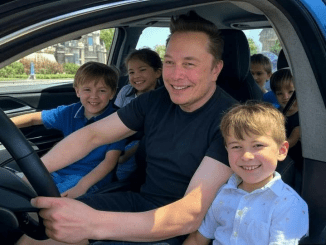In a stunning turn of events, Tesla’s core team of design legends and software masterminds is walking out, leaving Elon Musk to fend for himself at the helm of the company. This mass exodus, which includes some of Tesla’s most critical engineers and senior executives, has sent shockwaves through the automotive and tech industries. Once hailed as the driving force behind Tesla’s innovation and success, the departures raise serious questions about the future of the electric vehicle giant and the sustainability of Musk’s leadership.

Tesla has long been celebrated for its groundbreaking advancements in electric vehicle design and autonomous driving software. Much of this success can be attributed to a small but highly talented group of engineers, designers, and software experts who have been instrumental in developing the technologies that set Tesla apart from its competitors. From sleek, futuristic vehicle designs to the complex AI algorithms that power its self-driving features, these individuals were the cornerstone of Tesla’s identity.
However, over the past few months, tensions have been building within Tesla’s ranks. Sources close to the company suggest that many of the departing team members grew increasingly frustrated with Musk’s leadership style, particularly his growing focus on other ventures such as SpaceX and Twitter (now rebranded as X). Musk’s hands-on approach to Tesla’s operations, while once seen as an advantage, began to feel like micromanagement to many within the company. As Musk’s attention became more divided, key personnel felt sidelined, leading to a growing discontent.

The departure of these key figures—many of whom have been with Tesla since its early days—marks a turning point for the company. Their exit leaves Musk without the brilliant minds who helped build Tesla from the ground up. The impact of this brain drain could be significant, potentially stalling future innovations and delaying important projects. Tesla’s software team, in particular, has been responsible for some of the most advanced features in autonomous driving technology, a field where Tesla has maintained a competitive edge over rivals. Without the engineers and experts who shaped these technologies, questions loom over how Tesla will maintain its leadership in the highly competitive EV market.
While Musk remains steadfast in his commitment to Tesla, his growing list of challenges cannot be ignored. Running multiple companies, including SpaceX, The Boring Company, and X, has stretched his resources thin. His hands-on involvement in Twitter’s controversial rebrand and ongoing struggles to regain user trust have further drained his focus and time. These distractions, coupled with internal friction, have created an environment where Tesla’s most valuable employees feel that their vision and ambitions no longer align with Musk’s direction.

As Tesla faces an uncertain future, industry experts are wondering if the company can survive the loss of so many of its key innovators. Musk, however, has shown time and again that he thrives under pressure. In recent statements, he has expressed confidence in Tesla’s ability to adapt and continue leading the charge in the EV revolution, despite the setbacks. But the question remains: Can Musk continue to lead Tesla effectively without the brilliant team that helped him build it? With the company now standing largely on Musk’s shoulders, the road ahead looks both challenging and unpredictable.


